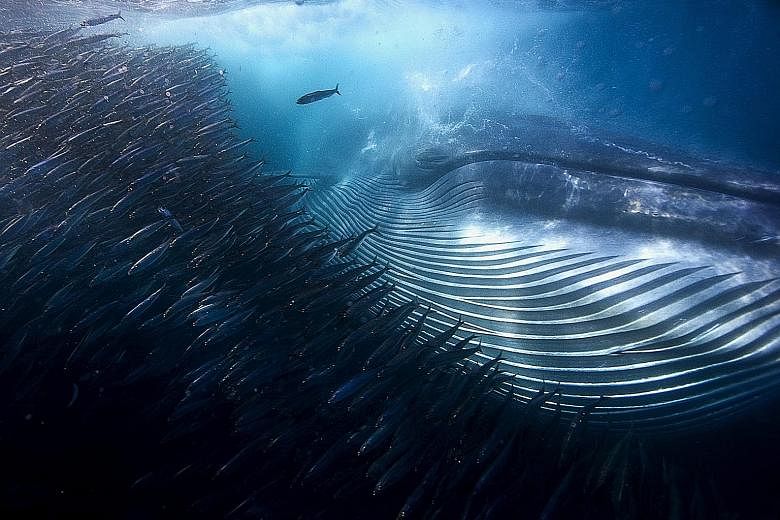Whales are big. Really big. The big mama of them all, the blue whale, can reach a whopping 172,000kg - which makes it the largest animal to have ever lived.
For as long as whales have awed us with their size, people have wondered how they became so colossal.
In a study published in the journal Proceedings of the Royal Society B, a team of researchers investigated gigantism in baleen whales, the filter-feeding leviathans that include blue whales, bowhead whales and fin whales.
The study found that the marine mammals became colossal only relatively recently, within the past 4.5 million years. The cause? A climatic change that allowed the behemoths to binge-eat.
Whales began as land-dwelling, hoofed mammals some 50 million years ago. Over several millions of years, they developed fins and became marine creatures. Between 20 million and 30 million years ago, some developed the ability to filter-feed, which meant they could swallow swarms of tiny prey in a single gargantuan gulp. But even with this feeding ability, whales remained only moderately large for millions of years.
"Then all of a sudden - boom - we see them get very big," said Dr Nick Pyenson, the curator of fossil marine mammals at the Smithsonian Institution's National Museum of Natural History. "It's like going from the size of minivans to longer than two school buses."
He and his colleagues measured over 140 museum specimens of fossilised whales, and plugged the data into a statistical model. It showed that several distinct lineages of baleen whales became giants at about the same time, starting around 4.5 million years ago. This period coincided with the time when ice sheets first began to cover more and more of the Northern Hemisphere.
Run-off from the glaciers would have washed nutrients such as iron into coastal waters, and intense seasonal upwelling cycles would have caused cold water from deep below to rise, bringing organic material towards the surface. Throngs of zooplankton and krill would have gathered to feast on the nutrients, forming vast dense patches. The oceans thus became "all you can eat" buffets for the whales.
"Even though they had the anatomical machinery to filter-feed for a long, long time," said Dr Jeremy Goldbogen, a comparative physiologist from Stanford University, "it wasn't until the ocean provided these patchy resources that bulk filter-feeding became so efficient."
NYTIMES

